U.S. Flag and Holidays
U.S. Flag and Holidays
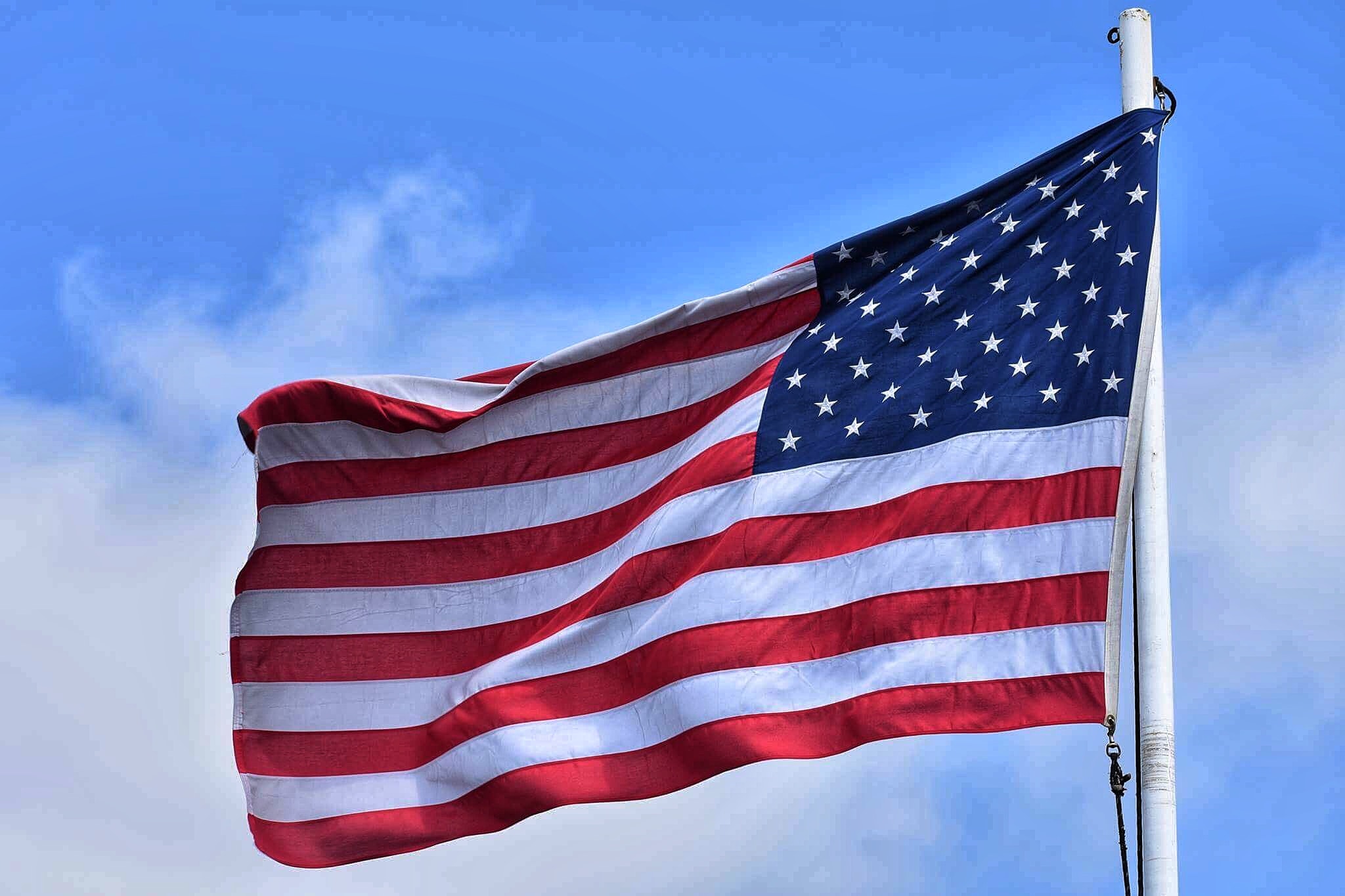 Flying the U.S. flag is appropriate every day. The U.S. and State flag should also be displayed on all National and State holidays, including historic and special occasions. Remember it is customary to display the flag only from sunrise to sunset. The U.S. and State flag may be displayed twenty-four hours with proper illumination. Use and display of the U.S. flag by civilians, civilian groups, and organizations are governed by 36 USC 173. Civilians who inquire about the display of the U.S. flag should be referred to this statute. The customary days to display the flag according to the Veterans of Foreign Wars (VFW) and the U.S. Army are as follows:
Flying the U.S. flag is appropriate every day. The U.S. and State flag should also be displayed on all National and State holidays, including historic and special occasions. Remember it is customary to display the flag only from sunrise to sunset. The U.S. and State flag may be displayed twenty-four hours with proper illumination. Use and display of the U.S. flag by civilians, civilian groups, and organizations are governed by 36 USC 173. Civilians who inquire about the display of the U.S. flag should be referred to this statute. The customary days to display the flag according to the Veterans of Foreign Wars (VFW) and the U.S. Army are as follows:
| New Year's Day | 01 January |
| Inauguration Day (every fourth year) | 20 January |
| Birthday of Martin Luther King, Jr. | 20 January |
| Lincoln's Birthday | 12 February |
| Washington's Birthday (President's Day) | 17 February |
| Army Day | 06 April |
| Easter Sunday | 20 April |
| Loyalty Day and Law Day USA | 01 May |
| Mother's Day | 11 May |
| Peace Officer's Memorial Day † | 15 May |
| Armed Forces Day § | 17 May |
| National Maritime Day | 22 May |
| Memorial Day (observed) ‡ § | 26 May |
| Flag Day (U.S. Army birthday) § | 14 June |
| Father's Day | 16 June |
| Juneteenth National Independence Day | 19 June |
| Independence Day § | 04 July |
| National Korean War Veterans Armistice Day | 27 July |
| Air Force Day | 01 August |
| Coast Guard Day | 04 August |
| National Aviation Day | 19 August |
| Labor Day | 01 September |
| Patriot Day † | 11 September |
| Citizenship (Constitution) Day | 17 September |
| Air Force Birthday | 18 September |
| POW/MIA Recognition Day § | 19 September |
| Gold Star Mother's Day | 28 September |
| Columbus Day (observed) | 13 October |
| Navy Day | 27 October |
| Marine Corps Day | 10 November |
| Veterans Day § | 11 November |
| Thanksgiving Day | 27 November |
| National Pearl Harbor Remembrance Day † | 07 December |
| Christmas Day | 25 December |
† Half-Staff until Sunset
‡ Half-Staff until Noon
§ POW/MIA Flag required over the White House; U.S. Capitol; World War II Memorial; Korean War Veterans Memorial; Vietnam Veterans Memorial; all major military installations; National cemeteries; all post offices; all Veterans Administration medical facilities; buildings and official offices of the Secretaries of State, Defense and Veterans Affairs and the Director of the Selective Service System. Most state and local governments across the nation have adopted similar laws. When displayed from a single flag pole, the POW/MIA flag should fly directly below, and be no larger than, the United States flag. If on separate poles, the U.S. flag should always be placed to the right of other flags. On the six national observances for which Congress has ordered display of the POW/ MIA flag, it is generally flown immediately below or adjacent to the United States flag as second in order of precedence.
Half-Staff
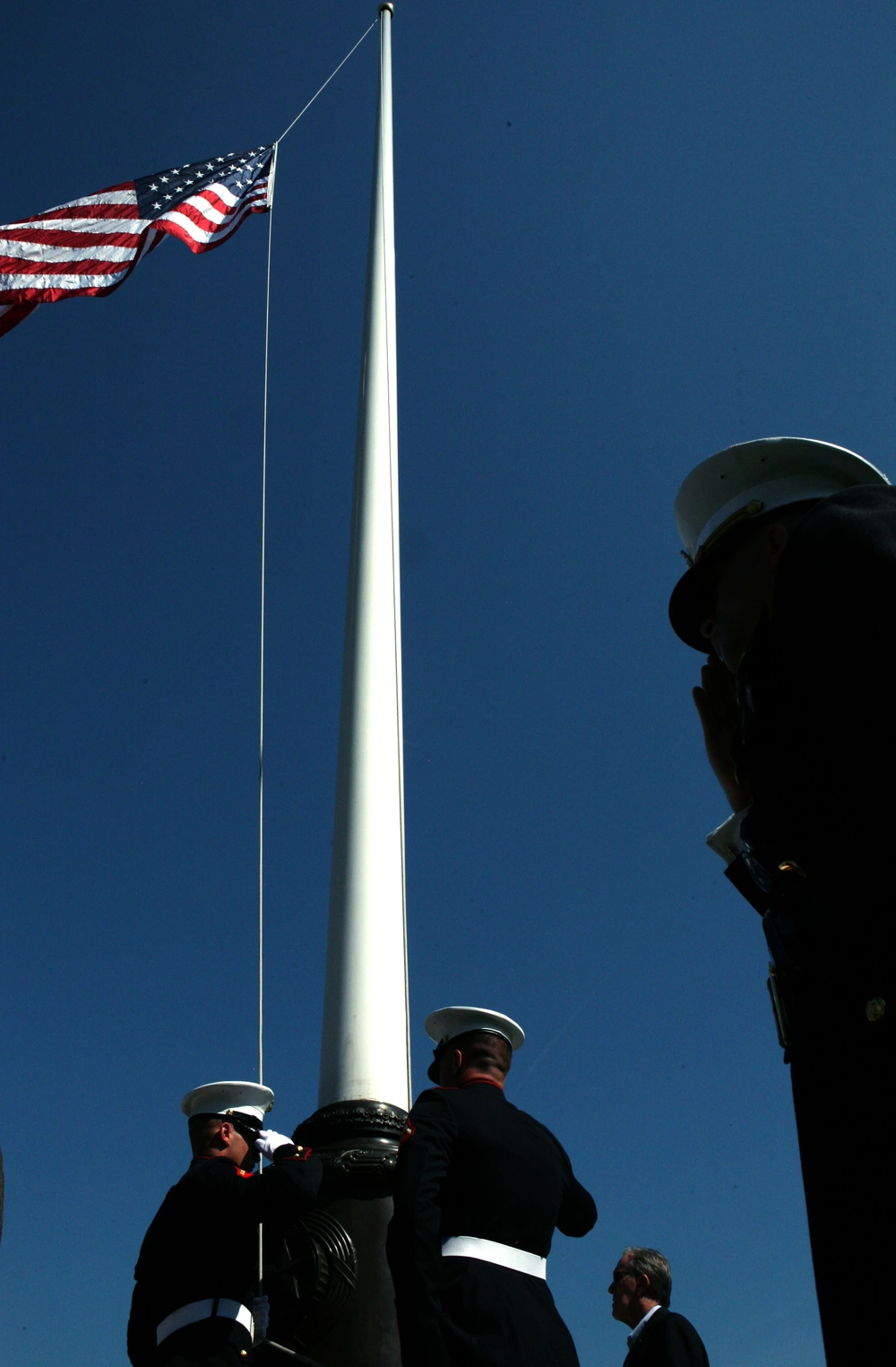 In the early days of our country, no regulations existed for flying the flag at half-staff and, as a result, there were many conflicting policies. But on March 1, 1954, President Dwight Eisenhower issued a proclamation on the proper times.
In the early days of our country, no regulations existed for flying the flag at half-staff and, as a result, there were many conflicting policies. But on March 1, 1954, President Dwight Eisenhower issued a proclamation on the proper times.
An easy way to remember when to fly the United States flag at half-staff is to consider when the whole nation is in mourning. These periods of mourning are proclaimed either by the president of the United States, for national remembrance, or the governor of a state or territory, for local remembrance, in the event of a death of a member or former member of the federal, state or territorial government or judiciary. The heads of departments and agencies of the federal government may also order that the flag be flown at half staff on buildings, grounds and naval vessels under their jurisdiction.
When the flag of the United States is displayed at Half-Staff, it is first hoisted to the top of the staff for an instant, then lowered to the Half-Staff position. The flag should again be raised to the top of the staff before it is lowered for the day.
The flag is in a Half-Staff position when it is any position below the top of the pole. Generally the position of the flag is at Half-Staff when the middle point of the hoist of the flag is halfway between the top of the staff and the foot.
The flag may be flown at Half-Staff to honor a newly deceased federal or state government official by order of the president or the governor, respectively.
On Memorial Day, the flag should be displayed at Half-staff until Noon. Whenever the flag is displayed at Half-Staff, it should be first raised to the top. Lowering from Half-Staff is preceded by first raising it momentarily to the top. Immediately before Noon, the band, if one is available, will play an appropriate musical selection, and at 1200 hours the national salute (21 guns) will be fired at all installations provided with the necessary equipment for firing salutes. At the conclusion of the salute, the flag will be hoisted to the top of the staff and will remain there until retreat.
While the flag of the United States is being lowered from the staff and folded, no portion of it should be allowed to touch the ground. The flag should be folded in the triangular shape of a cocked hat.
Military Funeral Honors
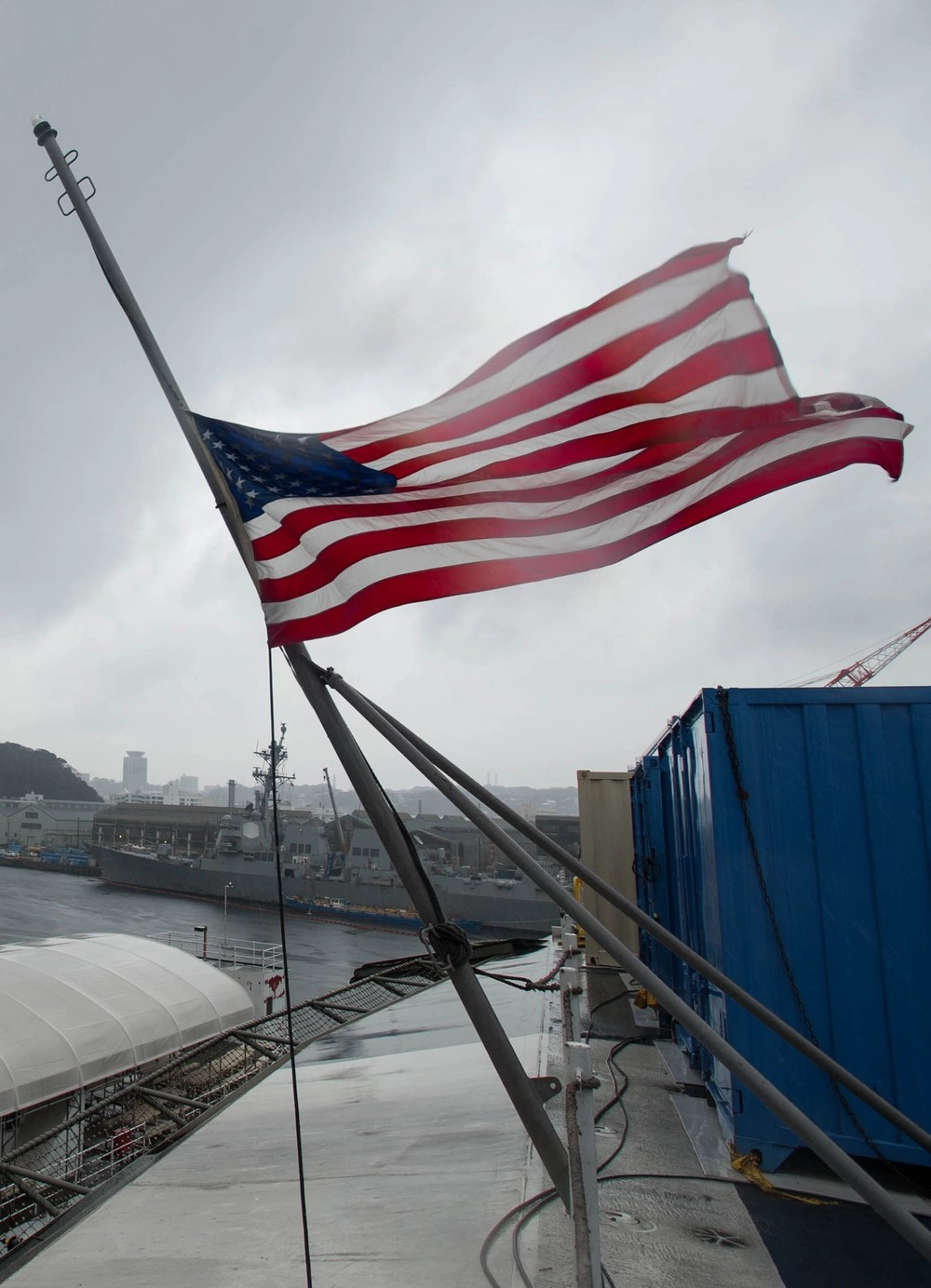 The National Defense Appropriations Act for Fiscal Year 2000 provides for the rendering of military funeral honors. Military funeral honors are a statutory entitlement. Eligible beneficiaries are Active-Duty Servicemembers, Retirees, Veterans (as defined by 38 USC 101), and deceased members and former members of the Selected Reserve (using the burial flag eligibility criteria in 38 USC 2301). Any person (Active, National Guard, or Reserve) who has completed at least one enlistment or other obligated military service and received an honorable discharge is eligible for Military Funeral Honors.
The National Defense Appropriations Act for Fiscal Year 2000 provides for the rendering of military funeral honors. Military funeral honors are a statutory entitlement. Eligible beneficiaries are Active-Duty Servicemembers, Retirees, Veterans (as defined by 38 USC 101), and deceased members and former members of the Selected Reserve (using the burial flag eligibility criteria in 38 USC 2301). Any person (Active, National Guard, or Reserve) who has completed at least one enlistment or other obligated military service and received an honorable discharge is eligible for Military Funeral Honors.
On a casket, the union (blue field) should be at the deceased person's head and heart, over the left shoulder. But the flag should be removed before the casket is lowered into the grave and should never touch the ground.
An American flag drapes the casket of deceased veterans to honor the memory of their service to their country. The ceremonial folding and presentation of that flag is a moving tribute of lasting importance to the Veteran’s family.
Funeral honors ceremonies conducted by the Department of Defense will use the following standardized language for the presentation of the flag to the designated flag recipient: "On behalf of the President of the United States, [the United States Army, the United States Marine Corps, the United States Navy or the United States Air Force] and a grateful nation, please accept this flag as a symbol of our appreciation for your loved one’s honorable and faithful service."
A funeral director making the presentation may use his or her own words or use the following language: "Please accept this flag as a symbol of our appreciation for your loved one’s honorable and faithful service."
The flag may cover a casket, but should not cover a statue or monument for unveiling. It should never be draped or drawn back in folds. Draped red, white and blue bunting should be used for decoration, with the blue at the top and red at the bottom.
During the ceremony of hoisting or lowering the flag or when the flag is passing in a parade or in review, all persons present in uniform should render the military salute. Servicemembers of the Armed Forces and Veterans who are present but not in uniform may render the military salute. All other persons present should face the flag and stand at attention with their right hand over the heart, or if applicable, remove their headdress with their right hand and hold it at the left shoulder, the hand being over the heart. Citizens of other countries present should stand at attention. All such conduct toward the flag in a moving column should be rendered at the moment the flag passes.
Burial Flag
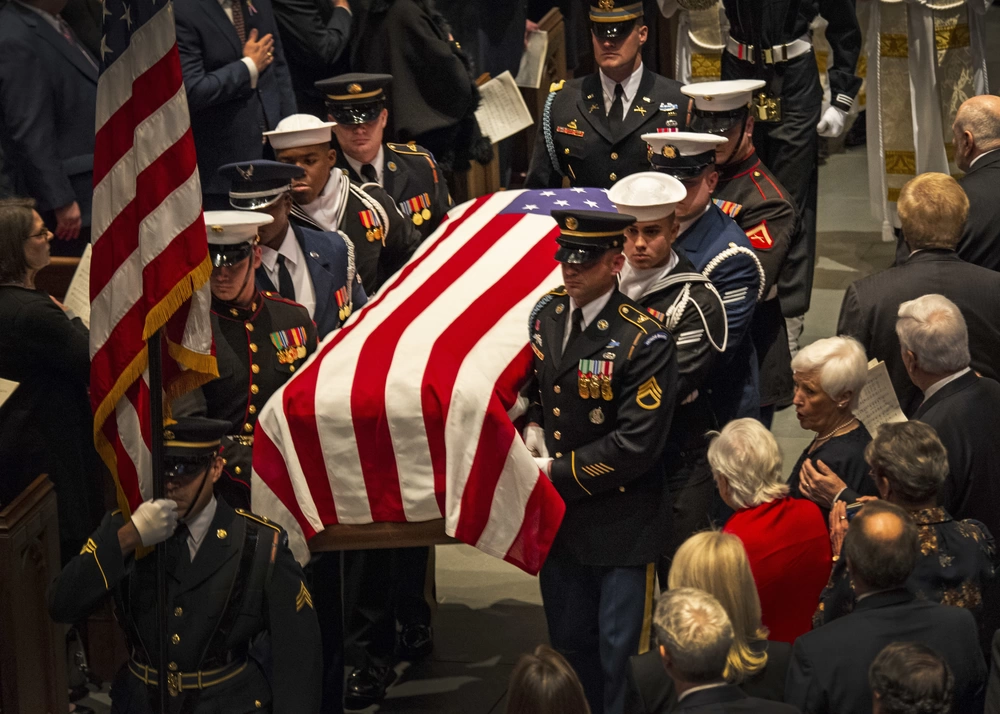 VA provides a United States flag to drape on a casket (or coffin) or place with an urn in honor of the military service of a Veteran or Reservist. Who is eligible for a burial flag? Generally, veterans with an other than dishonorable discharge.
VA provides a United States flag to drape on a casket (or coffin) or place with an urn in honor of the military service of a Veteran or Reservist. Who is eligible for a burial flag? Generally, veterans with an other than dishonorable discharge.
- This includes veterans who served in the Philippine military forces while
such forces were in the service of the U.S. armed forces under the President's
Order of July 26, 1941 and died on or after April 25, 1951, and veterans who
served in the Philippine military services are eligible for burial in a national
cemetery. - Veterans who were entitled to retired pay for service in the reserves, or
would have been entitled to such pay but not for being under 60 years of age. - Members or former members of the Selected Reserve (Army, Air Force,
Coast Guard, Marine Corps, or Naval Reserve; Air National Guard; or Army
National Guard) who served at least one enlistment or, in the case of an officer,
the period of initial obligation, or were discharged for disability incurred or
aggravated in line of duty, or died while a member of the Selected Reserve
Further clarification on eligibility is available from each branch of military service.

U.S. Army
800-325-4986
https://www.hrc.army.mil/content/Funeral%20Honors
U.S. Army Human Resources Command
The Adjutant General of the United States Army
Casualty and Mortuary Affairs Operations Center
AHRC-PDC-P
1600 Spearhead Division Ave.
Fort Knox, KY 40122-5405
 U.S. Navy
U.S. Navy
Commander, Navy Installations Command
202-433-6892
https://www.cnic.navy.mil/Operations-and-Management/Base-Support/Command-and-Staff/Casualty-Assistance/Funeral-Honors/
Commander, Navy Installations Command
Funeral Honors Program Manager (N00K)
716 Sicard St. SE, Suite 101
Washington Navy Yard, Washington, DC 20374-5140
U.S. Marine Corps
Military Casualty Matters Coordinator
866-826-3628
https://www.hqmc.marines.mil/Agencies/Casualty-MFPC/Funeral-Honors/
Headquarters, U.S. Marine Corps
Attn: MFPC (Funeral Honors)
2008 Elliot Road
Quantico, VA 22134
U.S. Coast Guard
Military Casualty Matters Coordinator
Office: 202-795-6637
Fax: Attention Casualty Chief, PSC-PSD-FS: 202-372-8488/8323
Duty cellphone: 571-266-2375 (24/7)
Online casualty resource, military funeral honors and Basic Allowance for Subsistence guidance: https://www.uscg.mil/Community/honorguard/
Commander CG Personnel Service Center PSC
Attn: Casualty Chief, PSC-PSD-FS-Casualty
U.S. Coast Guard Stop 7200
2703 Martin Luther King Jr. Ave. SE
Washington, DC 20593-7200
U.S. Air Force
Military Funeral Honors Coordinator
800-531-5803, Option 2
https://www.mortuary.af.mil/About-Us/Mortuary-Roles/
Air Force Military Funeral Honors
116 Purple Heart Drive
Dover Air Force Base, DE 19902
To request a burial flag, complete VA Form 27-2008, and submit it to any VA regional office or U.S. Post Office. When a burial is in a national, State, or military post cemetery, a burial flag will be provided by a funeral home.
Order of Precedence
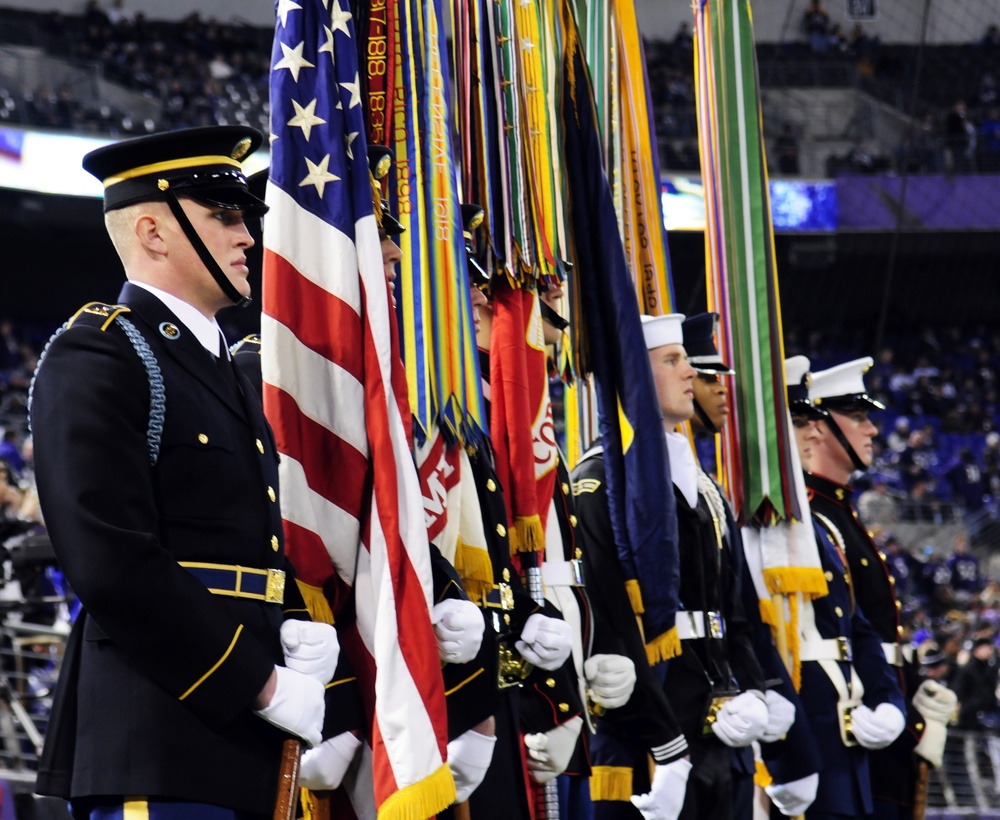 a. The flag of the United States
a. The flag of the United States
b. Foreign national flags (normally displayed in alphabetical order using the English alphabet
c. Flag of the President of the United States
d. State and territorial flags. Normally, state flags are displayed in order of admittance of the State to the Union. However, they may also be displayed in alphabetical order using the English alphabet. Territorial flags are displayed after the State flags either in the order they were recognized by the united States or alphabetically.
e. Military organizational flags of the Services in order of precedence
- Cadets, United States Military Academy
- Midshipmen, United States Naval Academy
- Cadets, United States Air Force Academy
- Cadets, United States Coast Guard Academy
- Midshipmen, United States Merchant Marine Academy
- United States Army
- United States Marine Corps
- United States Navy
- United States Air Force
- United States Space Force
- United States Coast Guard
- Army National Guard of the United States
- Army Reserve
- Marine Corps Reserve
- Naval Reserve
- Air National Guard of the United States
- Air Force Reserve
- Coast Guard Reserve
- Other training organizations of the Army, Marine Corps, Navy, Air Force, and Coast Guard, in that order, respectively.
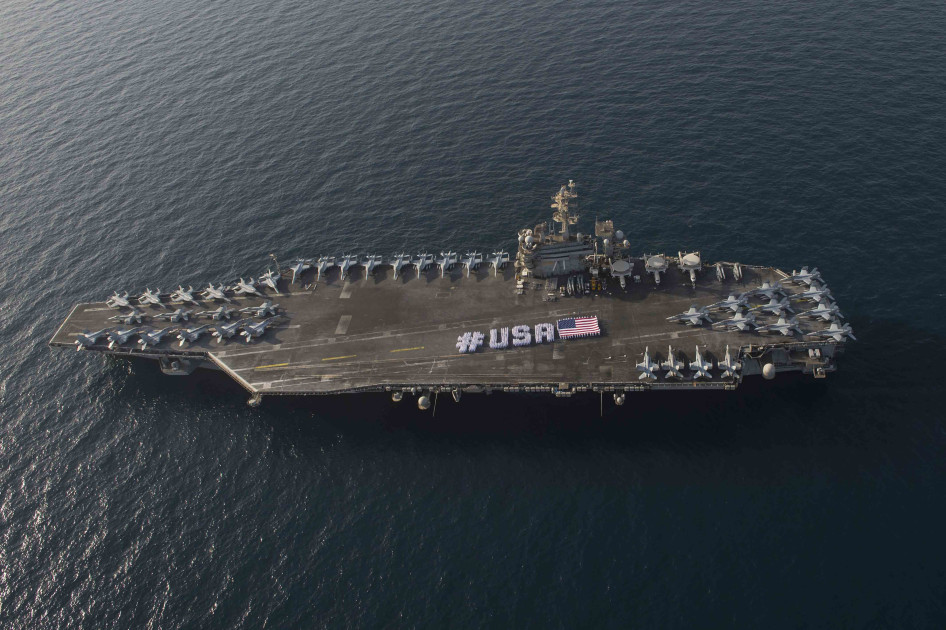 f. Military organizational flags within the service by echelon. The flag for the regimental corps will have precedence immediately before the regimental proponent’s command flag. The regimental corps flag will never have precedence above a MACOM flag.
f. Military organizational flags within the service by echelon. The flag for the regimental corps will have precedence immediately before the regimental proponent’s command flag. The regimental corps flag will never have precedence above a MACOM flag.
g. Individual flags in order of rank.
Independence Day
In commemoration of the Declaration of Independence, a salute to the Union (50 guns) will be fired at 1200 hours on Independence Day at all installations provided with the necessary equipment for firing salutes. When Independence Day falls on a Saturday, special ceremonies or salutes will take place on Saturday. When Independence Day occurs on a Sunday, commanders may authorize the special ceremonies or salutes take place on that day or the following day.
Important Things to Remember
Traditional guidelines call for displaying the flag in public only from sunrise to sunset. However, the flag may be displayed at all times if it's illuminated during darkness. The flag should not be subject to weather damage, so it should not be displayed during rain, snow and wind storms unless it is an all-weather flag.
When the flag hangs from a staff in a church or public place, it should appear to the audience on the left, the speaker's right. Any other flags displayed should be placed on the opposite side of the speaker.
It should be hoisted briskly and lowered ceremoniously.
It should be displayed often, but especially on national and state holidays and special occasions.
The flag should be displayed on or near the main building of public institutions, schools during school days, and polling places on election days.
When displayed over a street or sidewalk, where it can be seen from either side, be sure the union is to the north on an east-west street, and to the east on a north-south street. The same directions apply in a building lobby or corridor with entrances to the east and west or north and south.
When displayed against something, such as a wall, the union should be at the top and to the flag's own right, the observer's left - whether displayed horizontally or vertically.
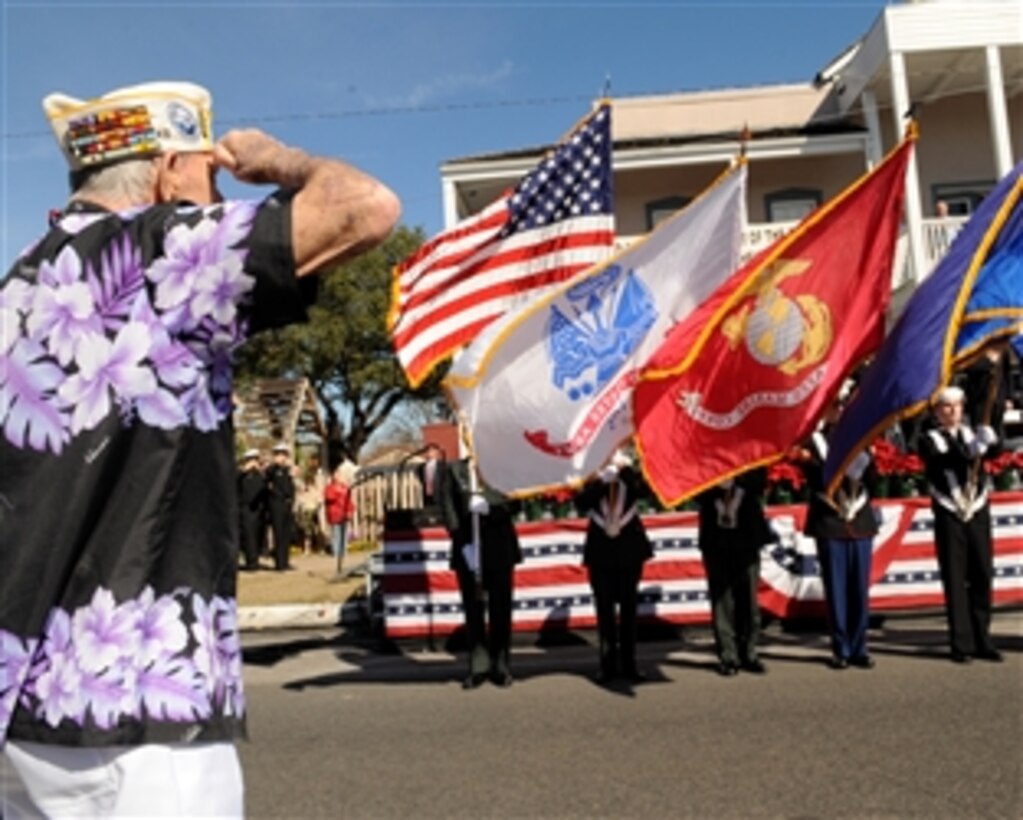 When displayed flat against the wall on a speaker's platform, the flag should be above and behind the speaker with the union on the left side as the audience looks at it (again, the flag's right).
When displayed flat against the wall on a speaker's platform, the flag should be above and behind the speaker with the union on the left side as the audience looks at it (again, the flag's right).
If the flag is suspended outdoors from a rope stretched from a building to a pole, the flag should be hoisted out from the building with the union first.
When displayed with another flag against a wall from crossed staffs, the U.S. flag should be on its own right (left to a person facing the wall) and its staff should be in front of the other flag's staff.
In a group of flags displayed from staffs, the U.S. flag should be at the center and the highest point.
When the flag is displayed other than from a staff, it should be flat or suspended so that it falls free.
When carried in procession with other flags, the U.S. flag should be either on the marching right (the flag's right) or to the front and center of the flag line.
When displayed on a float in a parade, the flag should be hung from a staff or suspended so it falls free. It should not be draped over a vehicle.
When flags of states, cities or organizations are flown on the same staff, the U.S. flag must be at the top (except during church services conducted at sea by Navy chaplains).
When other flags are flown from adjacent staffs, the U.S. flag should be hoisted first and lowered last. It must be on the right of other flags and no other flag should stand higher than it. Flags of other nations should be flown from separate staffs.
International custom dictates that flags of different nations be displayed at the same height in peacetime and be approximately the same size.
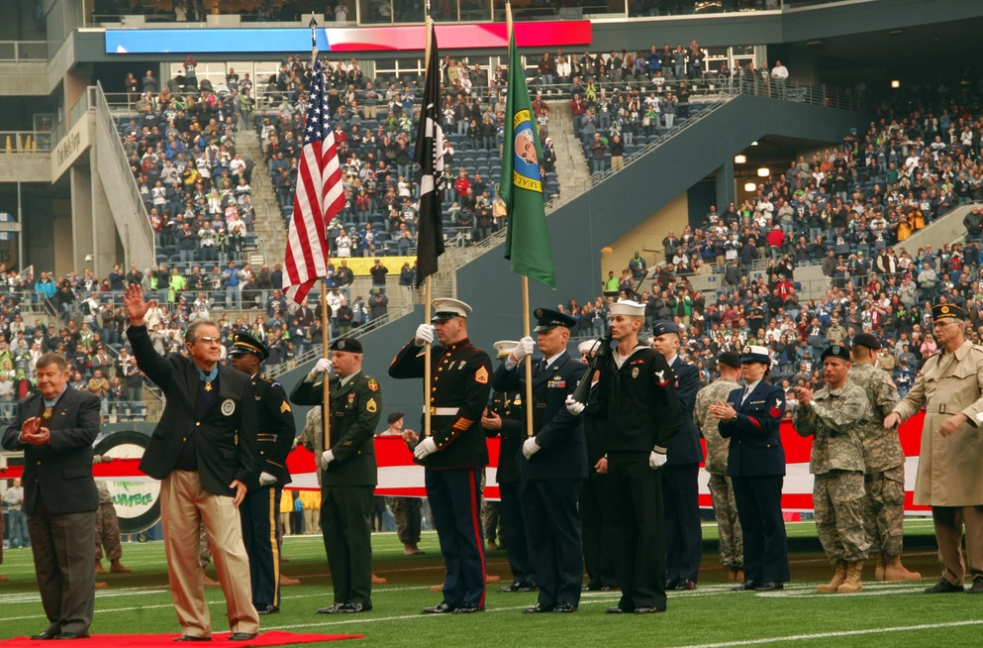 Guidelines for Displaying - Public Law 94-344
Guidelines for Displaying - Public Law 94-344
Flag Etiquette and Education
Public Law 94-344, known as the Federal Flag Code, contains rules for handling and displaying the U.S. Flag. While the federal code contains no penalties for misusing the flag, states have their own flag codes and may impose penalties. The language of the federal code makes clear that the flag is a living symbol. In response to a Supreme Court decision, which held that a state law prohibiting flag burning was unconstitutional, Congress enacted the Flag Protection Act in 1989. It provides that anyone who knowingly desecrates the flag may be fined and/or imprisoned for up to one year. However, this law was challenged by the Supreme Court in a 1990 decision that the Flag Protection Act violates the First Amendment free speech protections.
Out of respect for the U.S. flag, never:
- dip it for any person or thing, even though state flags, regimental colors and other flags may be dipped as a mark of honor.
- display it with the union down, except as a signal of distress.
- let the flag touch anything beneath it: ground, floor, water, merchandise.
- carry it horizontally, but always aloft.
- fasten or display it in a way that will permit it to be damaged or soiled.
- place anything on the flag, including letters, insignia, or designs of any kind.
- use it for holding anything.
- use it as wearing apparel, bedding or drapery. It should not be used on a costume or athletic uniform. However, a flag patch may be attached to the uniform of patriotic organizations, military personnel, police officers and firefighters.
- use the flag for advertising or promotion purposes or print it on paper napkins, boxes or anything else intended for temporary use and discard.
Use and Display by Civilians
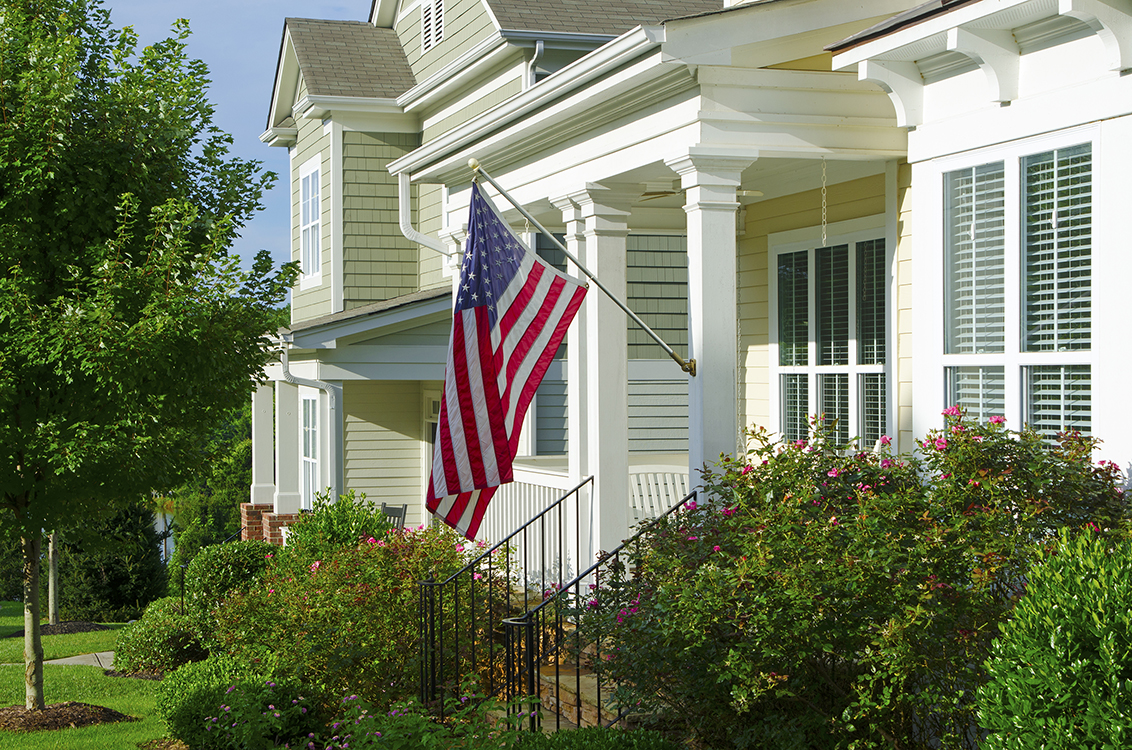 The U.S. and State flag should also be displayed on all National and State holidays, including historic and special occasions. Remember it is customary to display the flag only from sunrise to sunset. The U.S. and State flag may be displayed twenty-four hours with proper illumination. Use and display of the U.S. flag by civilians, civilian groups, and organizations are governed by 36 USC 173. Civilians who inquire about the display of the U.S. flag should be referred to this statute. They should be advised to consult the Attorney General of the State in which they reside or operate for information concerning State laws that apply to the U.S. flag.
The U.S. and State flag should also be displayed on all National and State holidays, including historic and special occasions. Remember it is customary to display the flag only from sunrise to sunset. The U.S. and State flag may be displayed twenty-four hours with proper illumination. Use and display of the U.S. flag by civilians, civilian groups, and organizations are governed by 36 USC 173. Civilians who inquire about the display of the U.S. flag should be referred to this statute. They should be advised to consult the Attorney General of the State in which they reside or operate for information concerning State laws that apply to the U.S. flag.
Disposal of Flag
When the flag is worn out or otherwise no longer a fitting emblem for display, it should be destroyed in a dignified way, preferably by burning.
- The flag should be folded in its customary manner.
- It is important that the fire be fairly large and of sufficient intensity to ensure complete burning of the flag.
- Place the flag on the fire.
- The individual(s) can come to attention, salute the flag, recite the Pledge of Allegiance and have a brief period of silent reflection.
- After the flag is completely consumed, the fire should then be safely extinguished and the ashes buried.
- Please make sure you are conforming to local/state fire codes or ordinances.
Proper flag disposal is one of the patriotic duties VFW Posts conduct nationwide. Please contact your local VFW Post if you'd like assistance or more information on proper flag disposal.
1777 and beyond
1777 - Flag Resolution of June 14, 1777 states: "Resolved: that the flag of the United States be made of thirteen stripes, alternate red and white; that the union be thirteen stars, white in a blue field, representing a new Constellation."
1794 - Provided 15 stripes and 15 stars after May 1795. Act of January 13, 1794.
1818 - Provided 13 stripes and one star for each state, to be added to the flag on the 4th of July following the admission of each new state. Act of April 4, 1818.
1912 - Executive Order of President Taft dated June 24, 1912. Established proportions of the flag and provided for arrangement of the stars in six horizonatal rows of eight each, a single point of each star to be upward.
1959 - Executive Order of President Eisenhower dated January 3, 1959. Provided for the arrangement of the stars in seven rows of seven stars each, staggered horizontally and vertically.
1959 - Executive Order of President Eisenhower dated August 21, 1959. Provided for the arrangement of nine rows of stars staggered horizontally and eleven rows of stars staggered vertically.
1777 to Present // Number of Stars in the U.S. Flag and additional states represented //
|
Date of Flag |
Additional states with date of entry into Union |
| 13 stars - 1777 to 1795 |
Delaware (December 7, 1787) Pennsylvania (December 12, 1787) New Jersey (December 18, 1787) Georgia (January 2, 1788) Connecticut (January 9, 1788) Massachusetts (February 6, 1788) Maryland (April 28, 1788) South Carolina (May 23, 1788) New Hampshire (June 21, 1788) Virginia (June 25, 1788) New York (July 26, 1788) North Carolina (November 21, 1789) Rhode Island (May 29, 1790) |
| 15 stars - 1795 to 1818 |
Vermont (March 4, 1791) Kentucky (June 1, 1792) |
| 20 stars - 1818 to July 3, 1819 |
Tennessee (June 1, 1796) Ohio (March 1, 1803) Louisiana (April 30, 1812) Indiana (December 11, 1816) Mississippi (December 10, 1817) |
| 21 stars - July 4, 1819 to July 3, 1820 |
Illinois (December 3, 1818) |
| 23 stars - July 4, 1820 to July 3, 1822 |
Alabama (December 14, 1819) Maine (March 15, 1820) |
| 24 stars - July 4, 1822 to July 3, 1836 |
Missouri (August 10, 1821) |
| 25 stars - July 4, 1836 to July 3, 1837 |
Arkansas (June 15, 1836) |
| 26 stars - July 4, 1837 to July 3, 1845 |
Michigan (Jan 26, 1837) |
| 27 stars - July 4, 1845 to July 3, 1846 |
Florida (March 3, 1845) |
| 28 stars - July 4, 1846 to July 3, 1847 |
Texas (December 29, 1845) |
| 29 stars - July 4, 1847 to July 3, 1848 |
Iowa (December 28, 1846) |
| 30 stars - July 4, 1848 to July 3, 1851 |
Wisconsin (May 29, 1848) |
| 31 stars - July 4, 1851 to July 3, 1858 |
California (September 9, 1850) |
| 32 stars - July 4, 1858 to July 3, 1859 |
Minnesota (May 11, 1858) |
| 33 stars - July 4, 1859 to July 3, 1861 |
Oregon (February 14, 1859) |
| 34 stars - July 4, 1861 to July 3, 1863 |
Kansas (January 29, 1861) |
| 35 stars - July 4, 1863 to July 3, 1865 |
West Virginia (June 20, 1863) |
| 36 stars - July 4, 1865 to July 3, 1867 |
Nevada (October 31, 1864) |
| 37 stars - July 4, 1867 to July 3, 1877 |
Nebraska (March 1, 1867) |
| 38 stars - July 4, 1877 to July 3, 1890 |
Colorado (August 1, 1876) |
| 43 stars - July 4, 1890 to July 3, 1891 |
North Dakota (November 2, 1889) South Dakota (November 2, 1889) Montana (November 8, 1889) Washington (November 11, 1889) Idaho (July 3, 1890) |
| 44 stars - July 4, 1891 to July 3, 1896 |
Wyoming (July 10, 1890) |
| 45 stars - July 4, 1896 to July 3, 1908 |
Utah (January 4, 1896) |
| 46 stars - July 4, 1908 to July 3, 1912 |
Oklahoma (November 16, 1907) |
| 48 stars - July 4, 1912 to July 3, 1959 |
New Mexico (January 6, 1912) Arizona (February 14, 1912) |
| 49 stars - July 4, 1959 to July 3, 1960 |
Alaska (January 3, 1959) |
| 50 stars - July 4, 1960 to present |
Hawaii (August 21, 1959) |
Flag Day
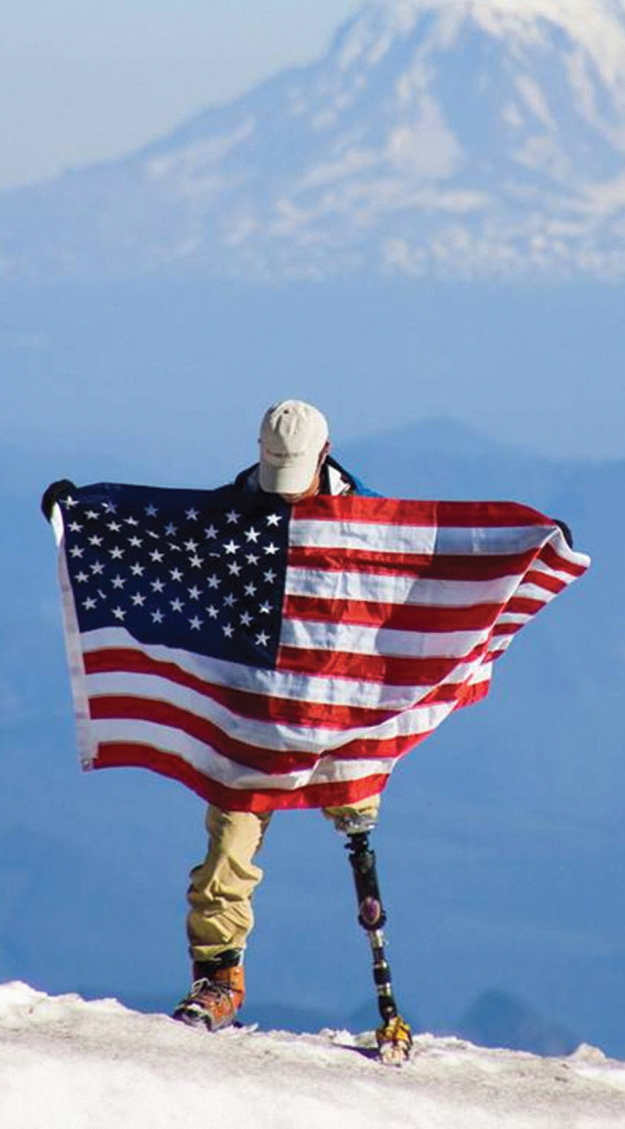 This was the resolution adopted by the Continental Congress on June 14, 1777. The resolution was made following the report of a special committee which had been assigned to suggest the flag’s design.
This was the resolution adopted by the Continental Congress on June 14, 1777. The resolution was made following the report of a special committee which had been assigned to suggest the flag’s design.
A flag of this design was first carried into battle on September 11, 1777, in the Battle of the Brandywine. The American flag was first saluted by foreign naval vessels on February 14, 1778, when the Ranger, bearing the Stars and Stripes and under the command of Captain Paul Jones, arrived in a French port. The flag first flew over a foreign territory in early 1778 at Nassau, Bahama Islands, where Americans captured a British fort.
Observance of the adoption of the flag was not soon in coming, however. Although there are many claims to the first official observance of Flag Day, all but one took place more than an entire century after the flag’s adoption in 1777.
The first claim was from a Hartford, Conn., celebration during the first summer of 1861. In the late 1800s, schools all over the United States held Flag Day programs to contribute to the Americanization of immigrant children, and the observance caught on with individual communities.
The most recognized claim, however, comes from New York. On June 14, 1889, Professor George Bolch, principal of a free kindergarten for the poor of New York City, had his school hold patriotic ceremonies to observe the anniversary of the Flag Day resolution. This initiative attracted attention from the State Department of Education, which arranged to have the day observed in all public schools thereafter.
Soon the state legislature passed a law making it the responsibility of the state superintendent of public schools to ensure that schools hold observances for Lincoln’s Birthday, Washington’s Birthday, Memorial Day and Flag Day. In 1897, the governor of New York ordered the displaying of the flag over all public buildings in the state, an observance considered by some to be the first official recognition of the anniversary of the adoption of the flag outside of schools.
Another claim comes from Philadelphia. In 1893, the Society of Colonial Dames succeeded in getting a resolution passed to have the flag displayed on all of the city’s public buildings. Elizabeth Duane Gillespie, a direct descendant of Benjamin Franklin and the president of the Colonial Dames of Pennsylvania, that same year tried to get the city to call June 14 Flag Day. Resolutions by women were not granted much notice, however, and it was not until May 7, 1937, that Pennsylvania became the first state to establish the June 14 Flag Day as a legal holiday. Flag Day is a nationwide observance today, but Pennsylvania is the only state that recognizes it as a legal holiday.
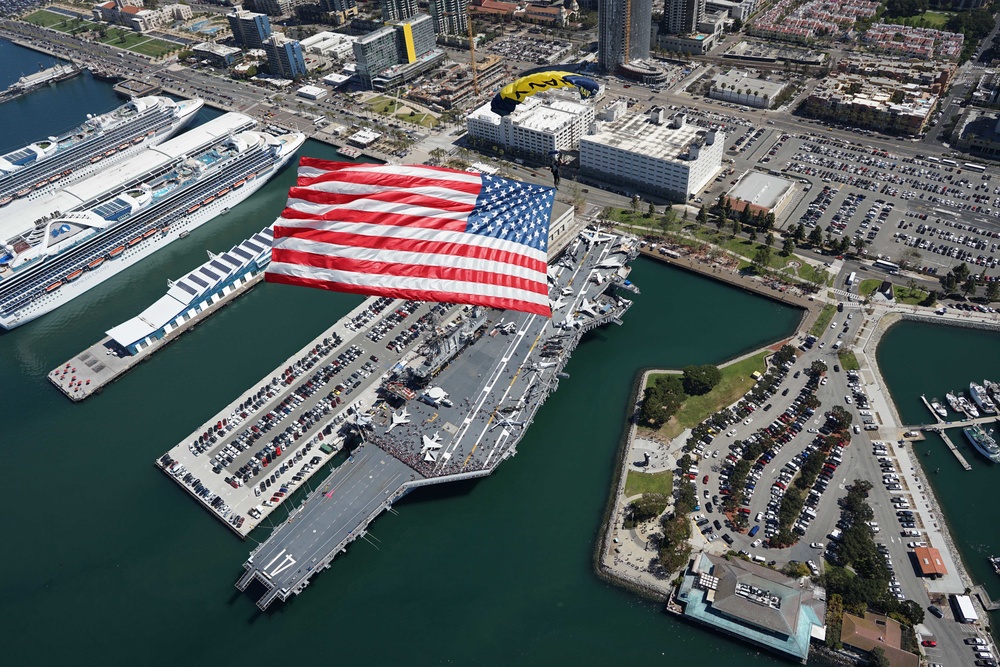 Bernard J. Cigrand, a school teacher in Waubeka, Wisconsin, reportedly spent years trying to get Congress to declare June 14 as a national holiday. Although his attempts failed, the day was widely observed. “Father of Flag Day” honors have been given to William T. Kerr, who was credited with founding the American Flag Day Association in 1888 while still a schoolboy in Pittsburgh, Pennsylvania.
Bernard J. Cigrand, a school teacher in Waubeka, Wisconsin, reportedly spent years trying to get Congress to declare June 14 as a national holiday. Although his attempts failed, the day was widely observed. “Father of Flag Day” honors have been given to William T. Kerr, who was credited with founding the American Flag Day Association in 1888 while still a schoolboy in Pittsburgh, Pennsylvania.
Both President Wilson, in 1916, and President Coolidge, in 1927, issued proclamations asking for June 14 to be observed as the National Flag Day. But it wasn’t until August 3, 1949, that Congress approved the national observance, and President Harry Truman signed it into law.
Armed Forces Day
On August 31, 1949, Secretary of Defense Louis Johnson announced the creation of an Armed Forces Day to replace separate Army, Navy and Air Force Days. The single-day celebration stemmed from the unification of the Armed Forces under one department -- the Department of Defense. Each of the military leagues and orders was asked to drop sponsorship of its specific service day in order to celebrate the newly announced Armed Forces Day. The Army, Navy and Air Force leagues adopted the newly formed day. The Marine Corps League declined to drop support for Marine Corps Day but supports Armed Forces Day, too.
On April 4, 1936, President Roosevelt issued a proclamation that Army Day be recognized by Congress as April 6 and observed nationwide. On March 1, 1937, Congress passed Resolution 5-75 which officially recognized Army Day. Army Day was last observed nationally on April 6, 1949.
 Navy Day was established on October 27, 1922 by the Navy League of the United States. Although it was not a national holiday, Navy Day received special attention from President Warren Harding. Harding wrote to the Secretary of the Navy Edwin Denby: "Thank you for your note which brings assurance of the notable success which seems certain to attend the celebration of Navy Day on Friday, October 27, in commemoration of past and present services of the Navy. From our earliest national beginnings, the Navy has always been, and deserved to be, an object of special pride to the American people. Its record is indeed one to inspire such sentiments, and I am very sure that such a commemoration as is planned will be a timely reminder." "It is well for us to have in mind that under a program of lessening naval armaments there is a greater reason for maintaining the highest efficiency, fitness and morale in this branch of the national defensive service. I know how earnestly the Navy personnel are devoted to this idea and want you to be assured of my hearty concurrence." October 27 was suggested by the Navy League to recognize Theodore Roosevelt's birthday. Roosevelt had been an Assistant Secretary of the Navy and supported a strong Navy as well as the idea of Navy Day. In addition, October 27 was the anniversary of a 1775 report issued by a special committee of the Continental Congress favoring the purchase of merchant ships as the foundation of an American Navy. Navy Day was last observed on Oct. 27, 1949.
Navy Day was established on October 27, 1922 by the Navy League of the United States. Although it was not a national holiday, Navy Day received special attention from President Warren Harding. Harding wrote to the Secretary of the Navy Edwin Denby: "Thank you for your note which brings assurance of the notable success which seems certain to attend the celebration of Navy Day on Friday, October 27, in commemoration of past and present services of the Navy. From our earliest national beginnings, the Navy has always been, and deserved to be, an object of special pride to the American people. Its record is indeed one to inspire such sentiments, and I am very sure that such a commemoration as is planned will be a timely reminder." "It is well for us to have in mind that under a program of lessening naval armaments there is a greater reason for maintaining the highest efficiency, fitness and morale in this branch of the national defensive service. I know how earnestly the Navy personnel are devoted to this idea and want you to be assured of my hearty concurrence." October 27 was suggested by the Navy League to recognize Theodore Roosevelt's birthday. Roosevelt had been an Assistant Secretary of the Navy and supported a strong Navy as well as the idea of Navy Day. In addition, October 27 was the anniversary of a 1775 report issued by a special committee of the Continental Congress favoring the purchase of merchant ships as the foundation of an American Navy. Navy Day was last observed on Oct. 27, 1949.
The Marine Corps celebrated its birthday, or Marine Corps Day, on July 11 from 1799 until 1921 when the date was permanently changed to November 10 to commemorate the establishment of the Corps to aid in the Revolutionary War. The day is still observed by U.S. Marines worldwide. Special exhibits, parades, drill team performances, and speeches typically mark the occasion. The Birthday Ball, which culminates in the cutting of the birthday cake, is held that evening in Washington, D.C. It is not possible to determine precisely when the first cake ceremony was held, but the first on record took place at Marine Barracks, Washington, D.C., in 1937. Major General Thomas Holcomb, the Commandant, presided at an open house for Marine Corps officers, including the cutting of a huge cake in the shape of Tun Tavern.
Coast Guard Day is primarily an internal activity for active-duty Coast Guard personnel, civilian members, reservists, retirees, auxiliarists, and dependents, but it does have a significant share of interest outside the Service. Grand Haven, Michigan, also known as Coast Guard City, USA, annually sponsors the Coast Guard Festival around August 4. Typically, it is the largest community celebration of a branch of the Armed Forces in the nation. In addition to celebrating their own day every year, Coast Guard members also participate as equal partners in Armed Forces Day activities.
 Air Force Day was established on August 1, 1947, by President Truman "in recognition of the personnel of the victorious Army Air Forces and all those who have developed and maintained our nation's air strength." August 1 was chosen to mark the 40th anniversary of the establishment, in 1907, of the Aeronautical Division in the Office of the Chief Signal Officer of the Army. Air Force Day came into being immediately after the signing of the National Security Act of 1947, although the status of the air element of the military was uncertain. Thus, although it was called Air Force Day, its first celebration was staged by the Army Air Forces and not by the U.S. Air Force. Underlying the Air Force Day celebration was a need to increase "both official and public awareness of the priority of importance of air forces in any system of national security," according to Mr. Truman. "The great strategic fact of our generation is that the United States now possesses live frontiers -- the frontiers of the air -- and that the oceans are no longer sure ramparts against attack." In his message to the nation on the first Air Force Day, President Truman said, "I remind all of our citizens that the air power of the nation is essential to the preservation of our liberty, and that the continued development of the science of air transportation is vital to the trade and commerce of a peaceful world." Air Force Day was last observed on August 1, 1949.
Air Force Day was established on August 1, 1947, by President Truman "in recognition of the personnel of the victorious Army Air Forces and all those who have developed and maintained our nation's air strength." August 1 was chosen to mark the 40th anniversary of the establishment, in 1907, of the Aeronautical Division in the Office of the Chief Signal Officer of the Army. Air Force Day came into being immediately after the signing of the National Security Act of 1947, although the status of the air element of the military was uncertain. Thus, although it was called Air Force Day, its first celebration was staged by the Army Air Forces and not by the U.S. Air Force. Underlying the Air Force Day celebration was a need to increase "both official and public awareness of the priority of importance of air forces in any system of national security," according to Mr. Truman. "The great strategic fact of our generation is that the United States now possesses live frontiers -- the frontiers of the air -- and that the oceans are no longer sure ramparts against attack." In his message to the nation on the first Air Force Day, President Truman said, "I remind all of our citizens that the air power of the nation is essential to the preservation of our liberty, and that the continued development of the science of air transportation is vital to the trade and commerce of a peaceful world." Air Force Day was last observed on August 1, 1949.
 Request a Flag flown over the Navy Memorial
Request a Flag flown over the Navy Memorial
3' x 5' Nylon US Flag Flown Over the Navy Memorial
Your flag will actually be flown over the United States Navy Memorial in Washington, DC and is yours to keep! Made-in-the USA, double-sided, embroidered nylon 3'x5' American Flag comes with a certificate of authenticity and a certificate of presentation from US Navy Memorial that is suitable for framing. Each flag is processed and fulfilled as soon as possible, and in the order received.
Send ensign and letter of request including rate/rank, name, and service of the individual for whom the flag is being flown.
U.S. NAVY MEMORIAL
701 PENNSYLVANIA AVE., NW SUITE 123
WASHINGTON, DC 20004
Request a Flag flown over the Air Force Memorial
Staff has the privilege to support requests to fly United States or United States Air Force flags on the main flagpole of the Memorial. Flags are flown Monday - Friday, with the exception of Federal Holidays. If there is inclement weather on the primary date chosen, the flag will be flown on the alternate date. All flags come back with a certificate certifying the date it was flown.
Request a Flag flown over the Capitol Hill
Serving Congress and the Supreme Court, the Architect of the Capitol (AOC) is the builder and steward of the landmark buildings and grounds of Capitol Hill. AOC staff preserves and maintains the historic buildings, monuments, art and inspirational gardens on the Capitol campus. The AOC fulfills on average more than 100,000 flag requests from Members of Congress annually, with the number of requests and the popularity of the Capitol Flag Program growing steadily each year. There are special flag poles where all flags are flown. After it is flown over the U.S. Capitol, each flag is issued a keepsake Certificate of Authenticity by the AOC. Contact your representative or senator to obtain a flag flown over the Capitol.
Request a flag to be flown over the Pentagon
The Pentagon Force Protection Agency will fly your American flag over the Pentagon in honor of a special occasion or person.

This list provides many locations where you can request to have a flag flown.
The Alamo
P.O. BOX 2599
SAN ANTONIO, TEXAS 78299
Ph: (210) 225-1391
![]()
Battleship North Carolina (BB 55)
P.O. BOX 480
WILMINGTON, NC 28402
Battleship TEXAS State Historic Site
Provide name of the person, organization, occasion (retirement, reenlistment, etc.), date flag should be flown (no less than 3 days from receipt of request), contact name and phone number, and return postage.
BATTLESHIP TEXAS STATE HISTORIC SITE
3527 BATTLEGROUND ROAD
LAPORTE, TX 77571
Construction Battalion Center
Gulfport, MS
N13/R1
4902 MARVIN SHIELDS BLVD
GULFPORT, MS 39501-5001
BM2 Justin Hannah
justin.j.hannah.mil@us.navy.mil
228-871-2099![]()
Historic Ship NAUTILUS (SSN 571)
Send ensign and letter request
USS NAUTILUS
P.O. BOX 571
GROTON, CT 06349
Ph: (860) 694-3558
![]()
Iwo Jima National Memorial Flag
Send ensign and letter request
Must be 3'x5' or larger. Provide name, rank, and years of service.
ATTN: FLAG DETAIL
1555 SOUTH GATE RD.
ARLINGTON, VA 22214
Ph: (703) 693-7215
![]()
National Naval Medical Center Bethesda
NATIONAL NAVAL MEDICAL CENTER
ATTN: CAREER DEVELOPMENT
8901 WISCONSIN AVENUE BETHESDA, MD 20889-5600
Requests should be routed through Military Service via Public Affairs/Command Communications: 301-295-5727
POC: Asst. Career Counselor
Ph: (301) 295-4611 DSN: 295-4611
![]()
Commander Naval Network Warfare
Command Naval Security Group Command
Send ensign and letter request:
CNSG
9800 SAVAGE RD SUITE 6585
FORT MEADE, MD 20755
Ph: (240) 373-3641 DSN: 685-3641
![]()
USS CONSTITUTION "Old Ironsides"
USS CONSTITUTION's Flag Coordinator honors requests to fly National Ensigns (a.k.a. American Flags) of recognized current and historic configurations, U.S. Navy Jacks and other official flags of military branches, state and federal government agencies. Please send us a flag (national ensign, jack, state flag, service flag, etc.) with the following information: Rank, warfare designation, full name of person receiving flag. The occasion for flying (retirement, commissioning, birthday, etc.). Date you would like flag flown (Leave blank if none). POC info and return address. No postage necessary, but a return address label would make things easier.
Email: constitution.faq@navy.mil Ph: 617-426-1812
![]()
USS DWIGHT D. EISENHOWER (CVN 69)
ATTN: CMC
USS DWIGHT D EISENHOWER (CVN 69)
FPO AE 09532-2830
![]()
USS NIMITZ (CVN 68)
COMMANDING OFFICER
USS NIMITZ CVN 68
ATTN CCC UNIT 100103 BOX 1 FPO AP 96620 CCC@CVN68.NAVY.MIL![]()
USS MISSOURI (BB 63) Museum
Please see the USS Missouri website (https://ussmissouri.org/) for instructions. ![]()
USS MIDWAY (CV 41)
Visitors Information Center
Flag Services
(619) 398-8264
visitorinfo@midway.org
https://www.midway.org/about/flag-flying-services
Celebrate the legacy of your loved ones with a our flag-raising service aboard the iconic USS Midway. Our Flag Service provides a meaningful way to honor military personnel, civilians, or anyone who holds the United States flag close to their heart. Whether you send your own flag or purchase one through our museum, it will be proudly raised to mark your special occasion.
Once we receive your flag and details it will be raised aboard the USS Midway. After the ceremony, the flag will be returned to you along with a personalized Certificate of Honor as a keepsake.
NW MIRECC disseminates mission-relevant knowledge through publications and continuing health care education programs across VISN 20 and nationally. Sign up for email updates or access your subscriber preferences: https://public.govdelivery.com/accounts/USVHAVISN20/subscriber/new.
Use of these Materials and Finding VA Health Care
Please note that the health care information provided in these materials is for educational purposes only. It does not replace the role of a medical practitioner for advice on care and treatment. If you are looking for professional medical care, find your local VA healthcare center by using the VA Facilities Locator & Directory. This page may contain links that will take you outside of the Department of Veterans Affairs website. VA does not endorse and is not responsible for the content of the linked websites.
VA Web Disclaimers
Disclaimer of Endorsement: Reference herein to any specific commercial products, process, or service by trade name, trademark, manufacturer, or otherwise, does not necessarily constitute or imply its endorsement, recommendation, or favoring by the United States Government. The views and opinions of authors expressed herein do not necessarily state or reflect those of the United States Government, and shall not be used for advertising or product endorsement purposes.
Disclaimer of Hyperlinks: The appearance of external hyperlinks does not constitute endorsement by the Department of Veterans Affairs of the linked websites, or the information, products or services contained therein. For other than authorized VA activities, the Department does not exercise any editorial control over the information you may find at these locations. All links are provided with the intent of meeting the mission of the Department and the VA website. Please let us know about existing external links which you believe are inappropriate and about specific additional external links which you believe ought to be included.
Disclaimer of Liability: With respect to documents available from this server, neither the United States Government nor any of its employees, makes any warranty, express or implied, including the warranties of merchantability and fitness for a particular purpose, or assumes any legal liability or responsibility for the accuracy, completeness, or usefulness of any information, apparatus, product, or process disclosed, or represents that its use would not infringe privately owned rights.
Reference from this web page or from any of the information services sponsored by the VA to any non-governmental entity, product, service or information does not constitute an endorsement or recommendation by the VA or any of its employees. We are not responsible for the content of any "off-site" web pages referenced from this server.
Disclaimer: The sharing of any non-VA information does not constitute an endorsement of products or services on the part of the VA.
![]()
VA Regional Offices
 The Veterans Benefits Administration (VBA) helps service members transition out of military service, and assists with Veterans with education, home loans, life insurance and much more. Service members, Veterans, their families, and Survivors are invited to request information on VA Benefits including disability compensation, pension, fiduciary, education, Veteran Readiness and Employment (VR&E), Home Loans, and Insurance. In addition to information on VA Benefits Veterans may initiate an intent to file and request assistance with filing compensation and pension claims. Visit regional office websites to learn about the services the regional office provides, directions to the facility, hours of operation, and the leadership team that serves the regional office.
The Veterans Benefits Administration (VBA) helps service members transition out of military service, and assists with Veterans with education, home loans, life insurance and much more. Service members, Veterans, their families, and Survivors are invited to request information on VA Benefits including disability compensation, pension, fiduciary, education, Veteran Readiness and Employment (VR&E), Home Loans, and Insurance. In addition to information on VA Benefits Veterans may initiate an intent to file and request assistance with filing compensation and pension claims. Visit regional office websites to learn about the services the regional office provides, directions to the facility, hours of operation, and the leadership team that serves the regional office.
Find out if you can get VA health care as a Veteran
The following four categories of Veterans are not required to enroll but are urged to do so to permit better planning of health resources:
- Veterans with a service-connected (SC) disability rated at 50% or more.
- Veterans seeking care for a disability the military determined was incurred or aggravated in the line of duty, but which VA has not yet rated, within 12 months of discharge.
- Veterans seeking care for a SC disability only or under a special treatment authority.
- Veterans seeking health registry examinations. VA’s health registry evaluation is a free, voluntary medical assessment for Veterans who may have been exposed to certain environmental hazards during military service. The evaluations alert Veterans to possible long-term health problems that may be related to exposure to specific environmental hazards during their military service. VA has established several health registries to track and monitor the health of specific groups of Veterans. You may be eligible to participate in one or more of these health registries: Agent Orange Registry, Airborne Hazards and Open Burn Pit Registry, Gulf War Registry (includes Operations Iraqi Freedom and New Dawn), Ionizing Radiation Registry, Depleted Uranium Follow-Up Program, and Toxic Embedded Fragment Surveillance Center. Use the chart below to help determine your eligibility.
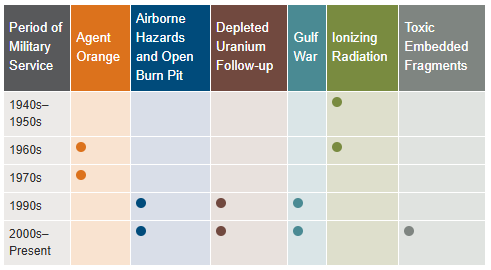
Find out how to apply for VA health care benefits as a Veteran or service member. For other mental health services, contact a VA medical center for information on eligibility and treatment options.
Community Care (Mission Act)
The MISSION Act became law in 2018, bringing the VA’s previous Veterans Choice Program to an end and establishing the Community Care Program. VA provides health care for Veterans from providers in your local community outside of VA. Veterans may be eligible to receive care from a community provider when VA cannot provide the care needed. This care is provided on behalf of and paid for by VA. Community care is also available to Veterans based on certain conditions and eligibility requirements, and in consideration of a Veteran’s specific needs and circumstances. VA offers urgent care services to eligible Veterans at in-network urgent care clinics to treat minor injuries and illnesses that are not life-threatening, such as colds, strep throat, sprained muscles, and skin and ear infections. Community care must be first authorized by VA before a Veteran can receive care from a community provider.
Vet Centers in VISN 20
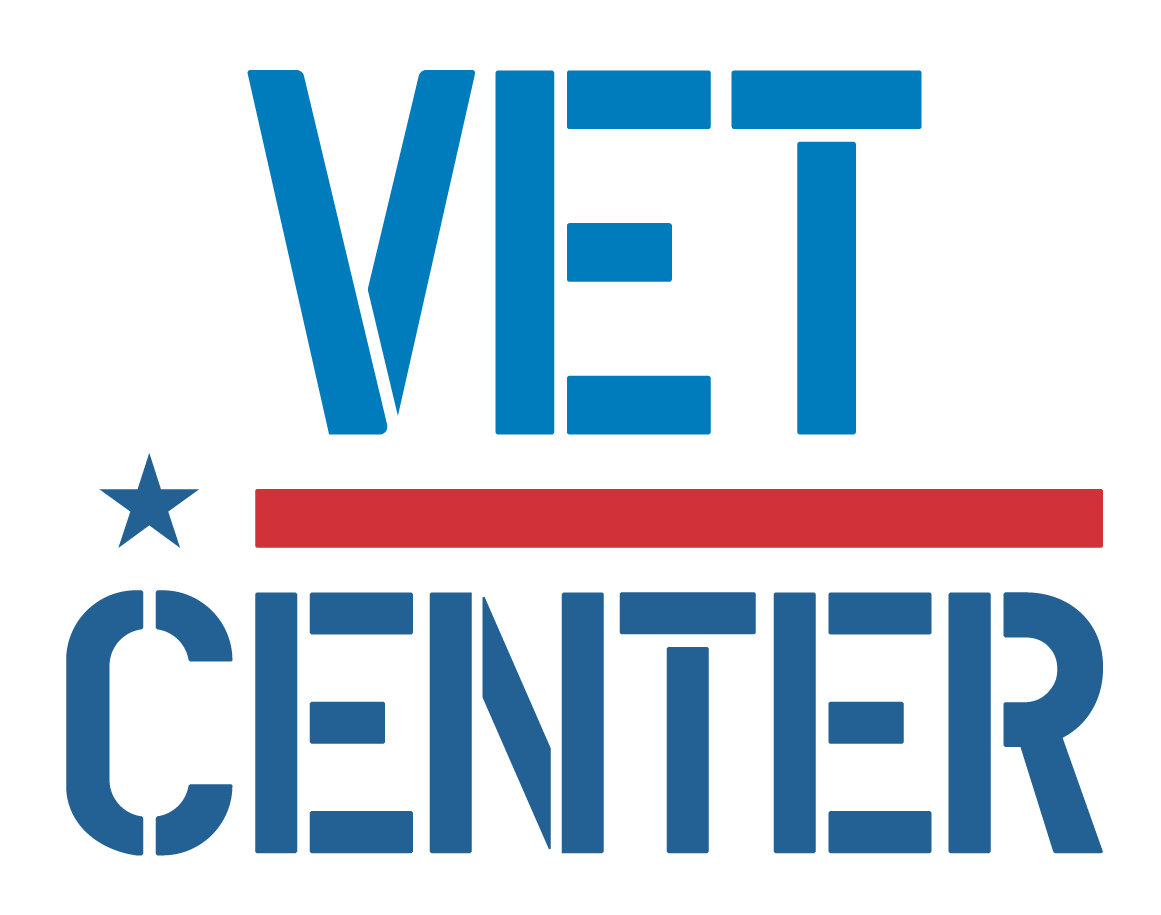 Vet Centers in VISN 20 are community-based counseling centers that provide a wide range of social and psychological services, including professional readjustment counseling to eligible Veterans, active-duty Army, Navy, Marine Corp, Air Force, Space Force, and Coast Guard service members, including National Guard and Reserve components, and their families. 1-877-927-8387 is an around the clock confidential call center where combat Veterans and their families can call to talk about their military experience or any other issue they are facing in their readjustment to civilian life. The staff is comprised of combat Veterans from several eras as well as families members of combat Veterans. This benefit is prepaid through the Veteran’s military service.
Vet Centers in VISN 20 are community-based counseling centers that provide a wide range of social and psychological services, including professional readjustment counseling to eligible Veterans, active-duty Army, Navy, Marine Corp, Air Force, Space Force, and Coast Guard service members, including National Guard and Reserve components, and their families. 1-877-927-8387 is an around the clock confidential call center where combat Veterans and their families can call to talk about their military experience or any other issue they are facing in their readjustment to civilian life. The staff is comprised of combat Veterans from several eras as well as families members of combat Veterans. This benefit is prepaid through the Veteran’s military service.
Alaska
| Anchorage Vet Center (Anchorage, AK) | Fairbanks Vet Center (Fairbanks, AK) |
| Kenai Vet Center Outstation (Soldotna, AK) | Wasilla Vet Center (Wasilla, AK) |
Idaho
| Boise Vet Center (Boise, ID) | East Idaho Vet Center (Idaho Falls, ID) |
Oregon
| Central Oregon Vet Center (Bend, OR) | Eugene Vet Center (Eugene, OR) |
| Grants Pass Vet Center (Grants Pass, OR) | Portland, OR Vet Center (Portland, OR) |
| Salem Vet Center (Salem, OR) |
Washington
Plan your trip to VA
 In 1946, Veterans Canteen Service (VCS) was established by law to provide comfort and well-being to America’s Veterans. With our many retail stores, cafés and coffee shops across the country, we serve those who have served our country. We are a self-sustaining entity providing merchandise and services to Veterans enrolled in VA’s healthcare system, their families, caregivers, VA employees, volunteers and visitors. We are honored to give back to the VA community through many programs established for the health and well-being of our nation’s heroes. Revenues generated from VCS are used to support a variety of programs, such as VA’s Rehabilitation Games, Fisher Houses, Poly-Trauma Centers for OIF/OEF/OND Veterans, disaster relief efforts, Substance Abuse Cessation, VA’s Homelessness initiatives, Women Veterans, Veteran Suicide Prevention and other activities.
In 1946, Veterans Canteen Service (VCS) was established by law to provide comfort and well-being to America’s Veterans. With our many retail stores, cafés and coffee shops across the country, we serve those who have served our country. We are a self-sustaining entity providing merchandise and services to Veterans enrolled in VA’s healthcare system, their families, caregivers, VA employees, volunteers and visitors. We are honored to give back to the VA community through many programs established for the health and well-being of our nation’s heroes. Revenues generated from VCS are used to support a variety of programs, such as VA’s Rehabilitation Games, Fisher Houses, Poly-Trauma Centers for OIF/OEF/OND Veterans, disaster relief efforts, Substance Abuse Cessation, VA’s Homelessness initiatives, Women Veterans, Veteran Suicide Prevention and other activities.
VCS operates over 200 Patriot Stores in Veterans Administration (VA) Medical Centers nationwide. Many of our stores have been recently updated and expanded to provide our customers with a modern, clean and comfortable shopping experience. Our stores welcome our customers with wider aisles, wood-like floors, enhanced lighting and directional signage. PatriotStores have expanded hours of operation to provide service for customers on weekends at most locations.
The Patriot Cafe is the best place in the VA Medical Center to enjoy delicious, freshly prepared breakfast or lunch served hot or cold each weekday. Providing Veterans, their families, VA employees, volunteers and visitors a place to relax and enjoy a meal or take-out for their convenience. With a wide variety of food from traditional comfort food, specialized menu selections and a large assortment of healthy choices; there is something for everyone's taste buds.
Hospital Service Directory
To find out whether there is a van near you use the Disabled American Veterans (DAV) Hospital Service Coordinator Directory to contact your nearest HSC for information or assistance. Please remember that the DAV Transportation Network is staffed by volunteers; therefore, it is unable to cover every community. The vans are driven by volunteers, and the rides coordinated by more than 133 Hospital Service Coordinators around the country. Our nation’s heroes travel around the globe to protect our freedoms—it’s only right that we return their dedication. Volunteering to drive a Vet ensures that even those living remotely from VA hospitals can make their appointments and never go without the treatment they need. Learn more about the DAV transportation network through the VISN 20 NewsFlash Resources section.
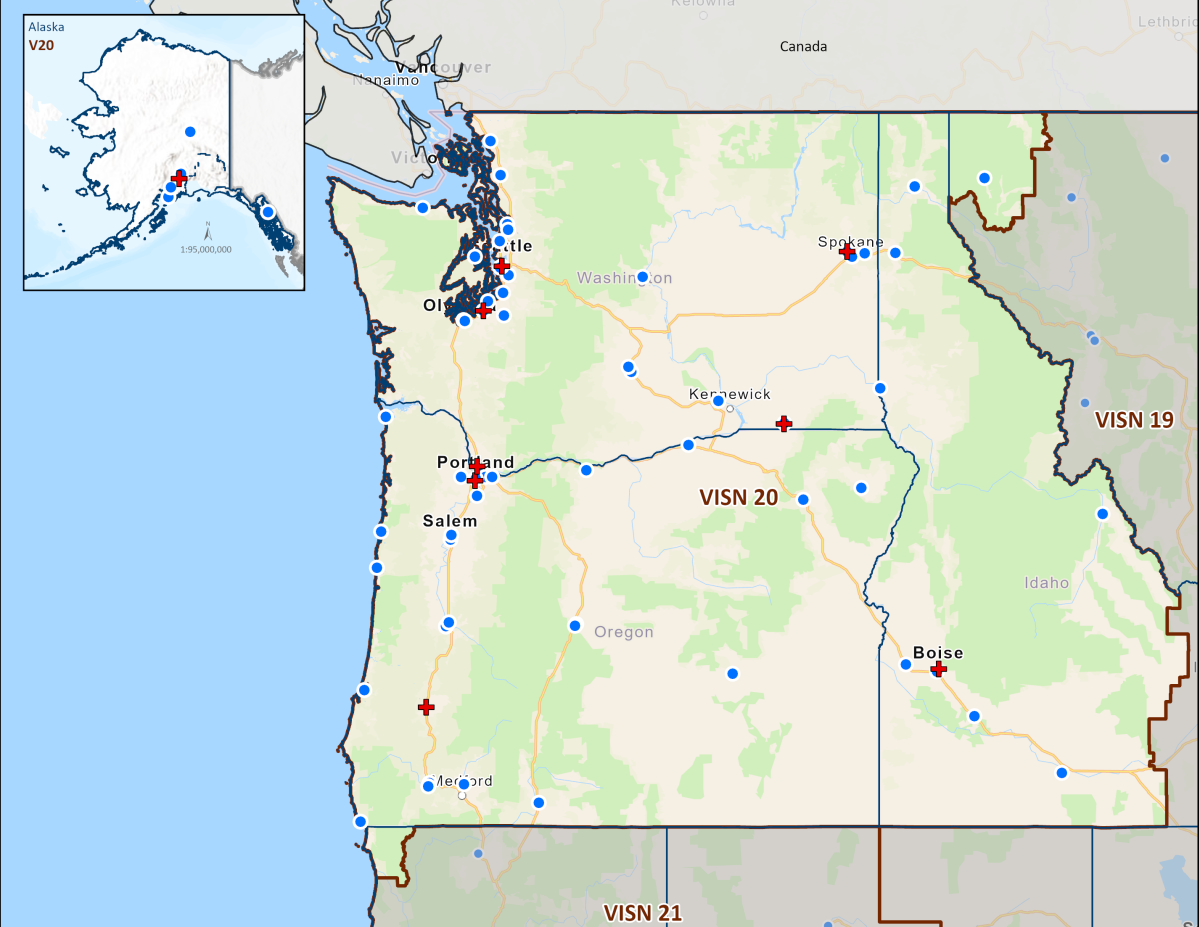 Today's VHA - the largest of the three administrations that comprise the VA - continues to meet Veterans' changing medical, surgical, and quality-of-life needs. VHA is the largest integrated health care system in the United States, providing care at 1,321 health care facilities, including 172 VA Medical Centers and 1,138 outpatient sites of care of varying complexity (VHA outpatient clinics) to over 9 million Veterans enrolled in the VA health care program. There are 18 Veterans Integrated Service Networks (VISNs) in VHA operating as regional systems of care to better meet local health care needs and provides greater access to care. In the Pacific Northwest, VISN 20 serves Veterans in Alaska, Oregon, Washington, most of Idaho, and one county each in California and Montana. Spanning 23% of the US land mass, VISN 20 is the largest geographic region of VA. Operating across three time zones over 817,417 square miles, VISN 20 is home to 273 federally recognized American Indian and Alaskan Native tribes. According to DoD, American Indians and Alaska Natives have one of the highest representations in the United States Armed Forces. VA consults with American Indian and Alaska Native tribal governments to develop partnerships that enhance access to services and benefits by Veterans and their families. VA is committed to ensuring that Native American Veterans and their families are able to utilize all benefits and services they are entitled to receive. As of the end of FY2024, 39% of VISN 20 enrollees resided in rural or highly rural areas.
Today's VHA - the largest of the three administrations that comprise the VA - continues to meet Veterans' changing medical, surgical, and quality-of-life needs. VHA is the largest integrated health care system in the United States, providing care at 1,321 health care facilities, including 172 VA Medical Centers and 1,138 outpatient sites of care of varying complexity (VHA outpatient clinics) to over 9 million Veterans enrolled in the VA health care program. There are 18 Veterans Integrated Service Networks (VISNs) in VHA operating as regional systems of care to better meet local health care needs and provides greater access to care. In the Pacific Northwest, VISN 20 serves Veterans in Alaska, Oregon, Washington, most of Idaho, and one county each in California and Montana. Spanning 23% of the US land mass, VISN 20 is the largest geographic region of VA. Operating across three time zones over 817,417 square miles, VISN 20 is home to 273 federally recognized American Indian and Alaskan Native tribes. According to DoD, American Indians and Alaska Natives have one of the highest representations in the United States Armed Forces. VA consults with American Indian and Alaska Native tribal governments to develop partnerships that enhance access to services and benefits by Veterans and their families. VA is committed to ensuring that Native American Veterans and their families are able to utilize all benefits and services they are entitled to receive. As of the end of FY2024, 39% of VISN 20 enrollees resided in rural or highly rural areas.
VA Medical Centers within VISN 20
Colonel Mary Louise Rasmuson Campus of the Alaska VA Healthcare System, Anchorage, Alaska
VA Boise Medical Center of the Boise VA Healthcare System, Boise, Idaho
VA Portland Medical Center of the Portland VA Healthcare System, Portland, Oregon
VA Roseburg Medical Center of the Roseburg VA Healthcare System, Roseburg, Oregon
VA White City Medical Center of the VA Southern Oregon Healthcare System, White City, Oregon
VA Seattle Medical Center of the VA Puget Sound Healthcare System, Seattle, Washington
Mann-Grandstaff Department of Veterans Affairs Medical Center, Spokane, Washington
Jonathan M. Wainwright Memorial VA Medical Center of the VA Walla Walla Healthcare System, Walla Walla, Washington
VA Puget Sound Health Care System (VAPSHCS) serves Veterans from a five-state area in the Pacific Northwest with two main divisions: American Lake VA Medical Center and Seattle VA Medical Center. Veterans Medical Centers are also located in Spokane, Vancouver, and Walla Walla. VA Outpatient Clinics and Vet Centers are located in Bellingham, Bellevue, Bremerton, Edmunds, Everett, Federal Way, Lacey, Mount Vernon, Olympia, Port Angeles, Puyallup, Richland, Renton, Silverdale, Seattle, Spokane, Union Gap, Vancouver, Walla Walla, Wenatchee, and Yakima.
VA Portland Health Care System (VAPORHCS) serves Veterans in Oregon and Southwest Washington with two main divisions: Portland VA Medical Center and Vancouver VA Medical Center. Veterans Medical Centers are also located in Roseburg, White City, and Vancouver, Washington. VA Outpatient Clinics and Vet Centers are located in Astoria, Bend, Boardman, Brookings, Eugene, Fairview, Grants Pass, Hines, Hillsboro, Klamath Falls, LaGrande, Lincoln City, Newport, Portland, Salem, The Dalles, and West Linn.
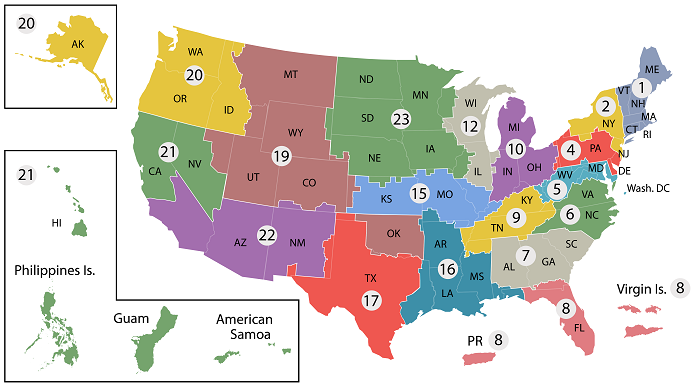
- VISN 1: VA New England Healthcare System
- VISN 2: New York/New Jersey VA Health Care Network
- VISN 4: VA Healthcare - VISN 4
- VISN 5: VA Capitol Health Care Network
- VISN 6: VA Mid-Atlantic Health Care Network
- VISN 7: VA Southeast Network
- VISN 8: VA Sunshine Healthcare Network
- VISN 9: VA MidSouth Healthcare Network
- VISN 10: VA Healthcare System
- VISN 12: VA Great Lakes Health Care System
- VISN 15: VA Heartland Network
- VISN 16: South Central VA Health Care Network
- VISN 17: VA Heart of Texas Health Care Network
- VISN 19: Rocky Mountain Network
- VISN 20: Northwest Network
- VISN 21: Sierra Pacific Network
- VISN 22: Desert Pacific Healthcare Network
- VISN 23: VA Midwest Health Care Network



















